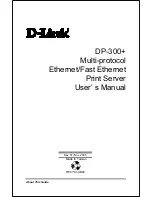
Intel® Server Boards SE7320SP2 and SE7525GP2
Platform Management
Revision 4.0
99
5.1.5
Mini-Baseboard Management Controller
At the heart of platform management is a management controller. To support the onboard
platform instrumentation management model, the server boards incorporate the National
Semiconductor* PC87431 Mini-BMC (mBMC).
The mBMC management controller is a microcontroller that provides the intelligence at the heart
of the Intelligent Platform Management architecture. The primary purpose of the management
controller is to autonomously monitor system ‘sensors’ for system platform management events,
such as over-temperature, out-of-range voltages, etc., and log their occurrence in the non-
volatile system event log (SEL). This includes events such as over-temperature and over-
voltage conditions, fan failures, etc. The management controller also provides the interface to
the sensors and SEL so system management software can poll and retrieve the present status
of the platform. The contents of the log can be retrieved ‘post mortem’ in order provide failure
analysis information to field service personnel. It is also accessible by system management
software, such as Intel
®
Server Management (ISM), running under the operating system.
The management controller includes the ability to generate a selectable action, such as a
system power-off or reset, when a match occurs to one of a configurable set of events. This
capability is called platform event filtering
,
or PEF.
The management controller includes ‘recovery control’ functions that allow local or remote
software to request actions such as power on/off, power cycle, and system hard resets, plus an
IPMI watchdog timer that can be used by BIOS and run-time management software as a way to
detect software hangs.
The management controller provides ‘out-of-band’ remote management interfaces providing
access to the platform health, event log, and recovery control features via LAN (all tiers).
Standard and Advanced systems also allow access via serial/modem, IPMB, PCI SMBus, and
ICMB interfaces. These interfaces remain active on standby power, providing a mechanism
where the SEL, SDR, and recovery control features can be accessed even when the system is
powered down.
Because the management controller operates independently from the main processor(s), the
management controller monitoring and logging functions, and the out-of-band interfaces can
remain operative even under failure conditions that cause the main processors, OS, or local
system software to stop.
The management controller also provides the interface to the non-volatile sensor data record
(SDR) repository. IPMI sensor data records provide a set of information that system
management software can use to automatically configure itself for the number and type of IPMI
sensors (e.g. temperature sensors, voltage sensors, etc.) in the system. This information allows
management software to automatically adapt itself to the particular system, enabling the
development of management software that can work on multiple platforms without requiring the
software to be modified.
Summary of Contents for SE7320SP2 - 800MHZ Ecc Ddr Xeon
Page 182: ......
















































